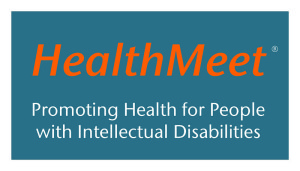Breast Cancer Doesn’t Discriminate
Breast cancer is second leading cause of cancer deaths among women. However, if found early breast cancer is also one of the most treatable cancers. These statics relate to ALL women, whether you have a disability or not, which is why it is so disconcerting that studies have shown that women with disabilities are much less likely to receive regular mammograms. Receiving routine check-ups and screenings are essential to finding these types of cancers early on when they are treatable. It is recommended that women over the age of 40 receive a mammogram every year. If you are a woman below the age of 40, but have a history of breast cancer in your family it is also advised that you start getting screened earlier.
There are no proven reasons as to why women with disabilities have less frequent screenings, but many times we are so focused on “treating the disability” that annual check-ups and appointments to screen for common diseases and conditions can get pushed to the side as less of a priority. Also, sometimes medical facilities and the equipment used for screenings such as mammograms are not always as accessible as they need to be.
Educating women with IDD, families and physicians is essential to help raise awareness of the importance of early detection. To lower your risk of getting breast cancer it is important to control your weight and exercise, limit the amount of alcohol you drink and know your family medical history. If you provide services to people with disabilities, teaching those you care for to perform an at home self breast exam can improve the changes of discovering lumps orchanges, such as tenderness, skin texture and color or enlargement of pores, that can indicate a problem.
 Programs, such as The Arc’s HealthMeet project and the Women Be Healthy program, offer information and resources for women with disabilities and their caregivers to learn more about the facts behind the need to receive these screenings. Visit The Arc’s HealthMeet webinar page to view our past webinar detailing results from the Women Be Healthy study. Remember to advocate for the women in your life by supporting them to understand and receive these preventative screenings.
Programs, such as The Arc’s HealthMeet project and the Women Be Healthy program, offer information and resources for women with disabilities and their caregivers to learn more about the facts behind the need to receive these screenings. Visit The Arc’s HealthMeet webinar page to view our past webinar detailing results from the Women Be Healthy study. Remember to advocate for the women in your life by supporting them to understand and receive these preventative screenings.








